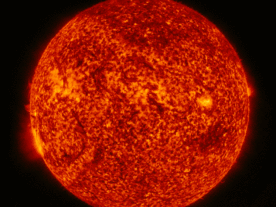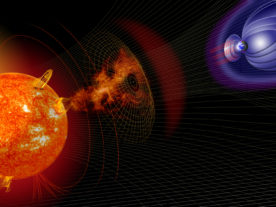
Space and Earth Weather Align to Make a Bad Situation Worse
A new study suggests that an unfortunate confluence of space weather and Earth weather events in early September 2017, may have made a bad situation worse in the wake of devastation left by a line of hurricanes in the Caribbean. As three tropical storms, including the category 5 hurricane Irma, were making their way across a […]

Cosmic Rays Found to Impact Cloud Formation
A recent study from scientists at the Technical University of Denmark provides new evidence that cosmic rays play a role in cloud formation, thus affecting our climate. Cosmic rays are a form of fast-moving, high-energy radiation that emanates from the sun or from sources light years away from our solar system. According to the study, […]

No Link Found Between Rainy Days and Pain
Your back and joints are aching and it’s raining outside so there’s got to be a connection between the two right? Well, not really. Researchers at the Harvard Medical School have released a recent study published in the BMJ (formerly the British Medical Journal) that suggests there is no link between rainy days and joint […]
Back to Civilization
The smell of decaying cedar and brine wash over me in slow, undulating waves. A light rain, falling from a mosaic of low-lying slate-grey clouds, coats my neck and arms in chilly dampness. I can taste the 100 percent humidity. Thick and metallic, I roll it over my tongue like a sommelier tasting a fine […]

October 2016 Science Images
September 2016 Science Images
The Sun has Risen
The sun sits two fingers above the horizon. It is obscured by fine, white, icy clouds, but you can still make out its circular shape—dimming and brightening with each gust of wind and slight fluctuation in temperature. Pulsing, blinking, fluttering, stuttering, it jabbers away in a Polar Morse code. Transfixed, I stand in the middle […]
Spring at the South Pole
It is springtime at the South Pole. The sun sits low on the horizon and bathes the landscape in rich hues of yellow and orange. Light bounces off each imperfection in the Polar Plateau, each wrinkle of snow and pinnacle of ice is set aglow. It transforms the ice cap from frozen desert to an […]
The air down there
To keep an eye on our changing climate, the National Oceanic and Atmospheric Administration’s Global Monitoring Division (GMD) operates six atmospheric baseline observatories around the world. They stretch from high in the Arctic Circle to the South Pole. Each facility collects similar data, and uses near-identical instruments and operating procedures to do so. By standardizing […]

The Day Geoscience Saved the World From Possible Armageddon
In the late 1960s, U.S. military action that would likely have led to nuclear Armageddon was averted, thanks to wary officers who looked for explanations other than Soviet aggression when warning systems suggested otherwise. A new study by three retired U.S. Air Force officers and researchers at the University of Colorado, Boulder, details the events […]
